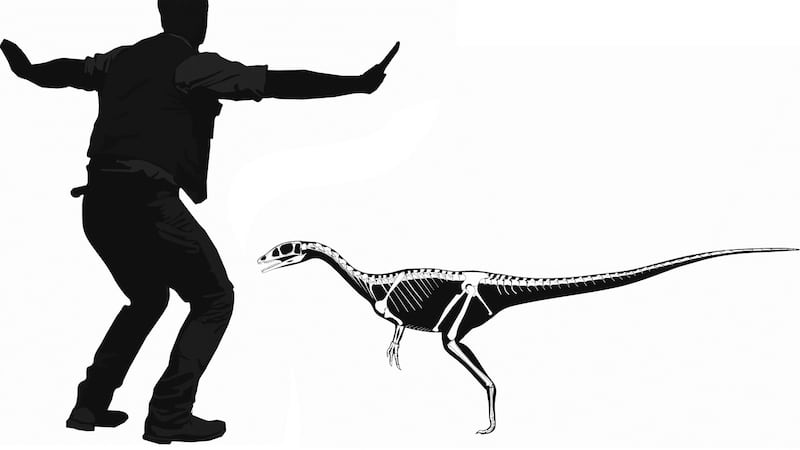Scientists have discovered the fossilised skull and bones of a "dragon" on a Severn Estuary beach near the town of Penarth in Wales.
The juvenile dinosaur, named Dracoraptor hanigani - Latin for “dragon robber” - dates back 201 million years and is one of the oldest known Jurassic dinosaurs.
Although a meat-eater and distantly related to Tyrannosaurus rex, the newly discovered species was nothing like as terrifying as its later cousin.

D. hanigani, which stood on two legs, was a small, agile animal probably no more than about 2.2ft tall and 6.5ft long with a long tail that may have been used for balance.
Since most of its bones were not yet fully formed, experts believe the Penarth specimen may have been a youngster.
Scientists have recovered about 40 per cent of the dinosaur’s skeleton, found embedded in rock at the base of a collapsed coastal cliff at Lavernock Point in March 2014.
At the start of the Jurassic Period, when D. hanigani was alive, the climate of south Wales was much warmer than it is today and dinosaurs were just starting to diversify.
The Welsh “dragon”, which belonged to the large theropod dinosaur family, is thought to be one of the oldest known Jurassic dinosaurs in the UK or even the world.
Dinosaur scientist Steven Vidovic, from the University of Portsmouth, one of the experts whose description of D. hanigani appears in the online journal Public Library of Science ONE, said: "The Triassic-Jurassic extinction event is often credited for the later success of dinosaurs through the Jurassic and Cretaceous, but previously we knew very little about dinosaurs at the start of this diversification and rise to dominance.
“Now we have Dracoraptor, a relatively complete two metre-long juvenile theropod from the very earliest days of the Jurassic in Wales.”
Mr Vidovic said it was difficult to estimate how big an adult Dracoraptor would be. Based on other specimens from the same period, a rough guess would be “more than three metres” (9.8 ft).
At the time it was alive, dinosaurs were yet to get into their stride and take over the Earth. The dominant species were early ancestors of crocodiles and mammals.
“You just don’t find these animals, so this is an incredible discovery,” said Mr Vidovic. “You can count the number of known dinosaurs from this time period on your fingers.”
The bones were found by a pair of brothers and amateur fossil-hunters, Nick and Rob Hanigan, who had been searching for ichthyosaur remains. Their surname was adopted for the dinosaur's species classification.
PA











